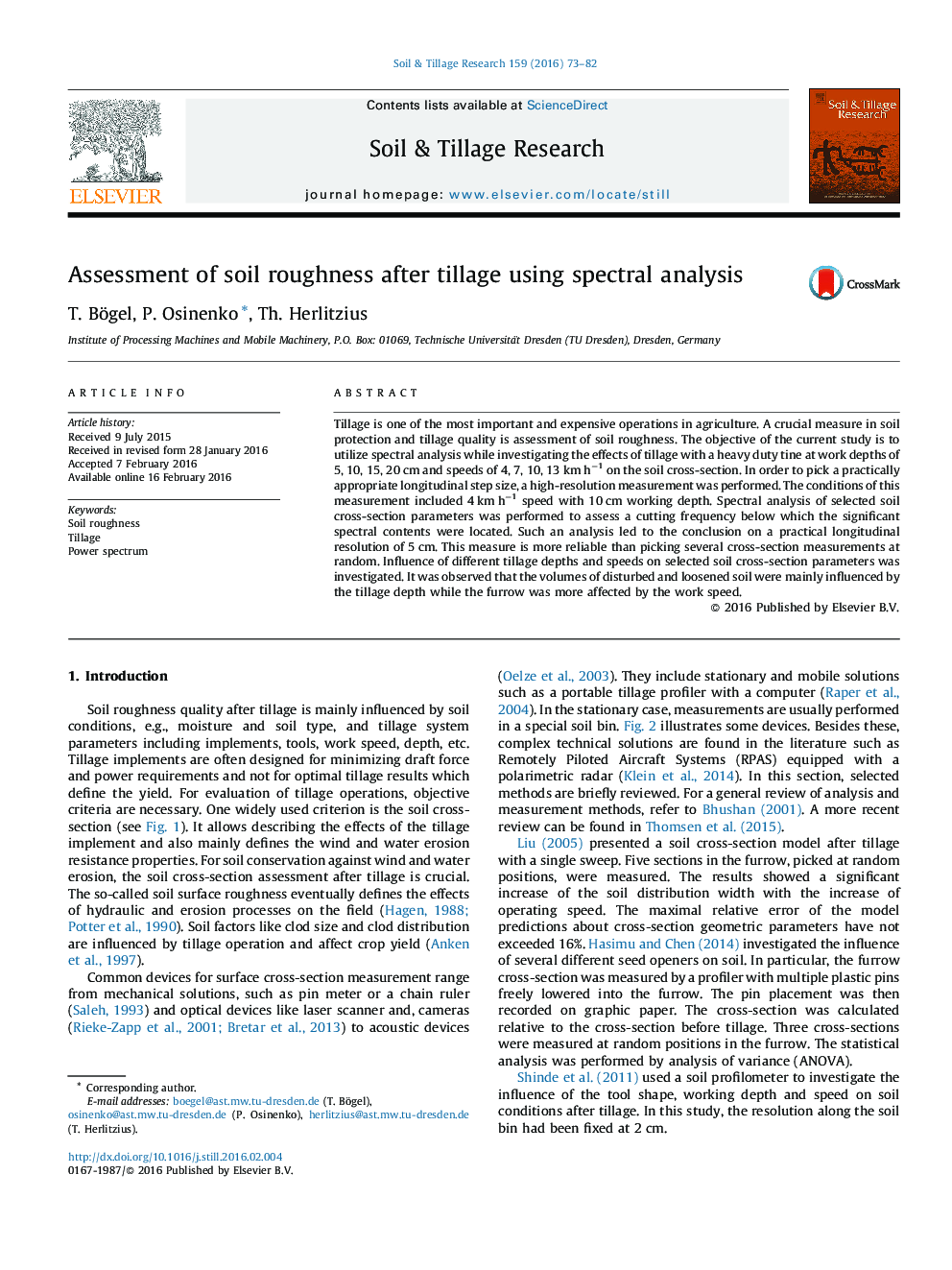| Article ID | Journal | Published Year | Pages | File Type |
|---|---|---|---|---|
| 305437 | Soil and Tillage Research | 2016 | 10 Pages |
•Soil roughness assessment based on soil cross-section parameters is addressed.•The main concern is choice of distance between consequent cross-section measurements.•Spectral analysis is suggested to choose a practically reasonable distance.•The new method serves balancing of measurement accuracy and time/labor saving.•Additionally, effects of tillage speed and depth on soil roughness are estimated.
Tillage is one of the most important and expensive operations in agriculture. A crucial measure in soil protection and tillage quality is assessment of soil roughness. The objective of the current study is to utilize spectral analysis while investigating the effects of tillage with a heavy duty tine at work depths of 5, 10, 15, 20 cm and speeds of 4, 7, 10, 13 km h−1 on the soil cross-section. In order to pick a practically appropriate longitudinal step size, a high-resolution measurement was performed. The conditions of this measurement included 4 km h−1 speed with 10 cm working depth. Spectral analysis of selected soil cross-section parameters was performed to assess a cutting frequency below which the significant spectral contents were located. Such an analysis led to the conclusion on a practical longitudinal resolution of 5 cm. This measure is more reliable than picking several cross-section measurements at random. Influence of different tillage depths and speeds on selected soil cross-section parameters was investigated. It was observed that the volumes of disturbed and loosened soil were mainly influenced by the tillage depth while the furrow was more affected by the work speed.
